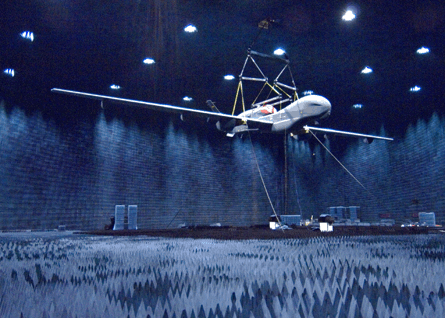Northrop Grumman's Euro Hawk unmanned air vehicle has undergone electromagnetic interference testing at Edwards AFB, California, moving the type a step closer to its service entry with the German air force.
Conducted inside the Benefield Anechoic Facility (BAF) on 10-11 March, the work exposed the development of the US Air Force's Block 20 RQ-4 Global Hawk to a range of EMI frequencies likely to be encountered once the type becomes operational over the skies of Europe.
"Although EMI testing has already been conducted on the Global Hawk, the Euro Hawk has never been flown in the unique radio frequency environment of Europe," the USAF says.
 |
|---|
© Edward Cannon/USAF |
"In highly populated areas there are more emitters, so there's risk associated in flying an unmanned aircraft in those environments," says Daniel Suh, Northrop's Euro Hawk system engineering manager, in a USAF report. "The BAF provided some unique testing to reduce that risk. There are specific frequencies that we look at using the antennas within the BAF, as well as adjusting energy levels."
Northrop conducted the first flight of a Euro Hawk on 29 June 2010, when it flew the aircraft from its Palmdale site in California to Edwards AFB. Achievements during the flight-test campaign have included a flight of more than 30h that ended on 2 December.
Contracted in 2007, the Euro Hawk project is a collaboration between Northrop and EADS company Cassidian. The latter is responsible for system elements including the UAV's signals intelligence payload.
The first delivery under the five-aircraft programme will be made in late 2011, with the Euro Hawk fleet to eventually replace Germany's retired Dassault/Breguet Atlantic surveillance aircraft.
Its remaining four air vehicles are due to enter use in 2015-16, says Northrop, following an extensive period of testing in Germany.
Source: Flight International



















